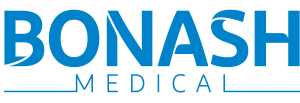Interval cranioplasty with patient specific implants and autogenous bone grafts – Success and cost analysis
Bernd Lethaus a, Monique Bloebaum a, David Koper a, Mariel Poort-ter Laak b, Peter Kessler
Journal of Cranio-Maxillo-Facial Surgery
Different options exist for the reconstruction of craniectomy defects following interval cranioplasty. The standard procedure is still based on the re-implantation of autogenous bone specimen which can be stored in the abdominal wall or be cryopreserved. Alternatively, patient-specific implants (PSIs) can be used. We conducted a retrospective study based on 50 consecutive patients with skull bone defects of 100 cm2 or more being operated on by the same team of surgeons. Thirty-three patients agreed to take part in the study. Seventeen patients who underwent reconstruction with PSIs (follow-up, 43 months [range, 3-93]) were compared with 16 control subjects who had autogenous bone grafts re-implanted (follow-up, 32 months [range, 5-92]). Criteria analyzed were the success and complication rates, operation time, duration of hospitalization and the treatment costs.
Complication rate and the rate of reoperation were significantly lower, and the hospital stay was shorter in the PSI group. The treatment costs for reconstruction with autogenous bone were lower than skull bone reconstruction based on PSIs. Due to biological reasons some of the autogenous bone implants fail due to infection and resorption and the patients have to undergo another operation with implantation of a PSI in a secondary attempt. For those patients the highest overall treatment costs must be calculated.
Conclusion: High success rates and reliability of PSIs may change the treatment strategy in patients undergoing interval cranioplasty.
Please note:
This abstract was published on Bonash Medical’s website since its content was related to the company’s products. There is no relation between
Bonash Medical and the authors. To have full access to the article, please refer to relevant reference.
